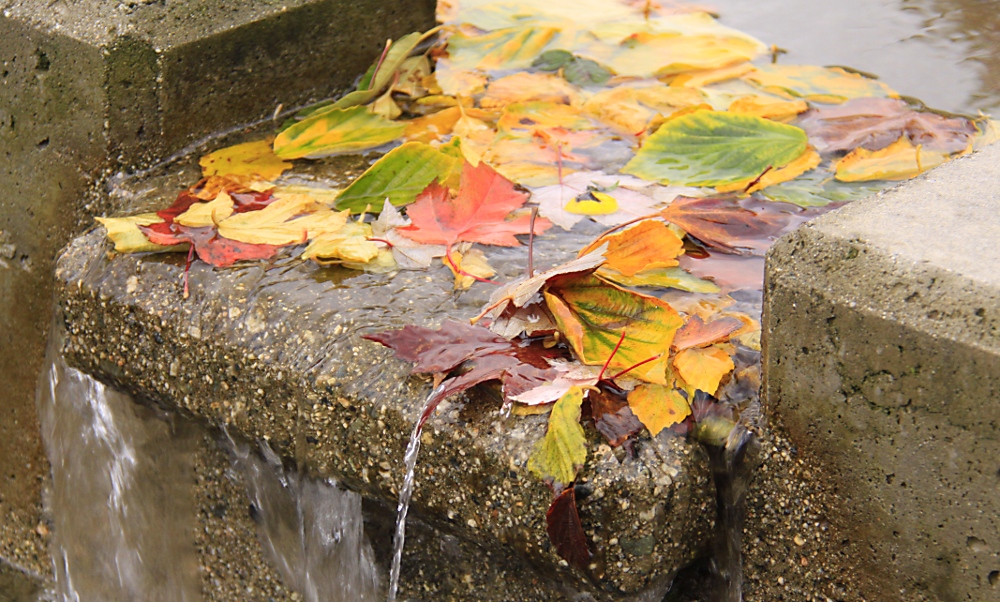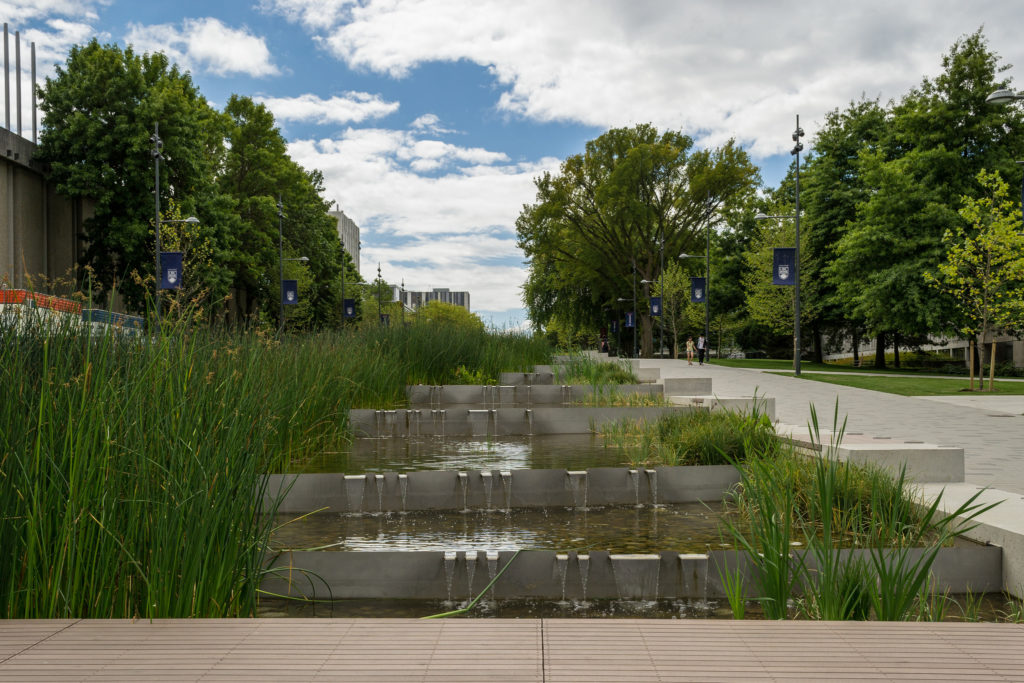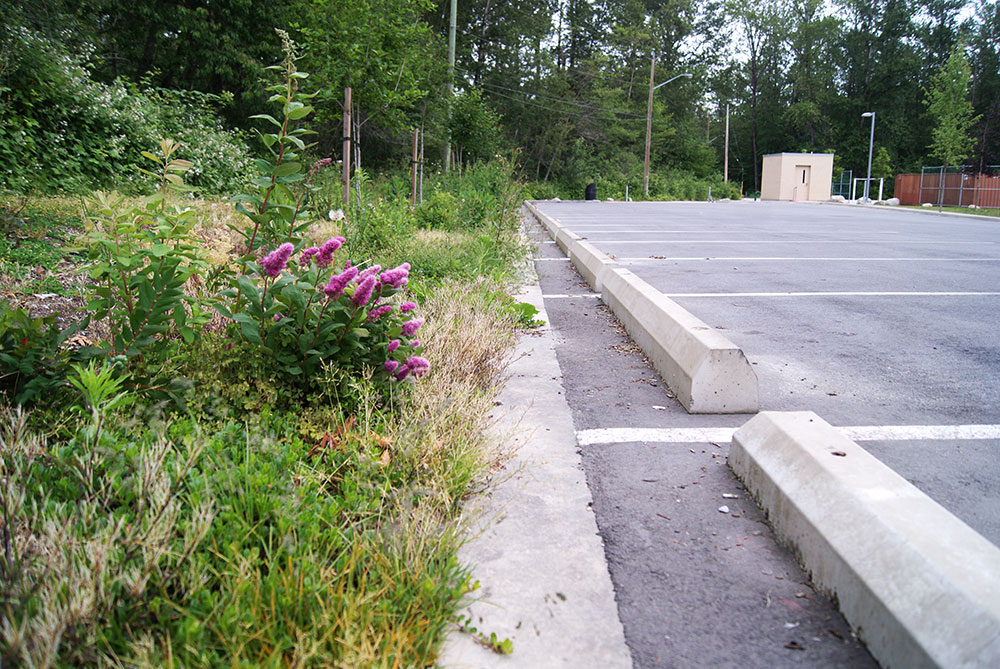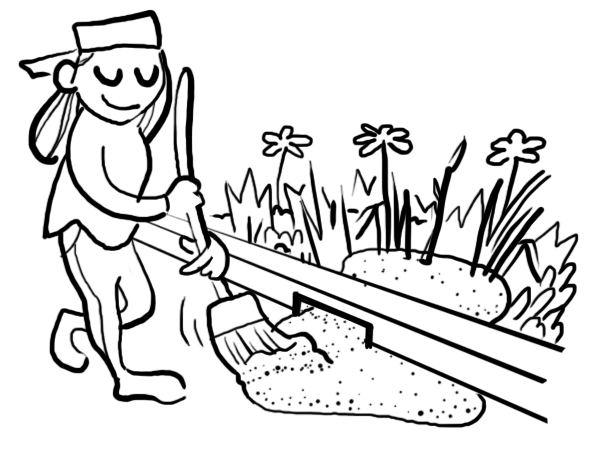Cleaning and Removal
Green elements like rain gardens will gradually accumulate fine sediments. These will need to be removed from time to time to keep the plants healthy and to maintain proper drainage. Any paved drainage features like runnels or grates will also need to be cleaned of debris and sediment on occasion to prevent clogging. Plant matter will accumulate, especially if the rain garden is under a tree, in which case fallen autumn leaves may need to be removed.

Image: waferboard
Cutting and Grooming
Depending on the design of the green element, some seasonal trimming may be needed. Cutting back long grasses and sedges can keep the plants performing at their best and keep them at a desirable size. The trimmed plant matter might be left over the green element as mulch, or removed to give the plants more breathing room. A landscape architect will be able to tell you how a rain garden or other green element will need to be maintained based on the design and plant selection.

This stormwater feature gets a hard cutback every fall. (Image: Miguel Garcia)
Weeding
Specific plants are carefully chosen for these types of elements, and with good reason. This can include aesthetics as well as how they function to absorb water, hold soil, filter contaminants, and so on. Tree seedlings and other weeds can be blown in from the wind, brought by birds, or spread by underground roots if they are adjacent to a planting area. If any undesirable plants make their way into a rain garden or other green element, those plants should be promptly removed. This is especially important for green roofs, as some plants can have very aggressive roots that can damage the waterproofing layer over a building. Green roofs should be checked several times per year to remove weeds keep them problem-free.

Being on top of weeds will keep this stormwater detention strip looking great. (Image: Heather Scott)
